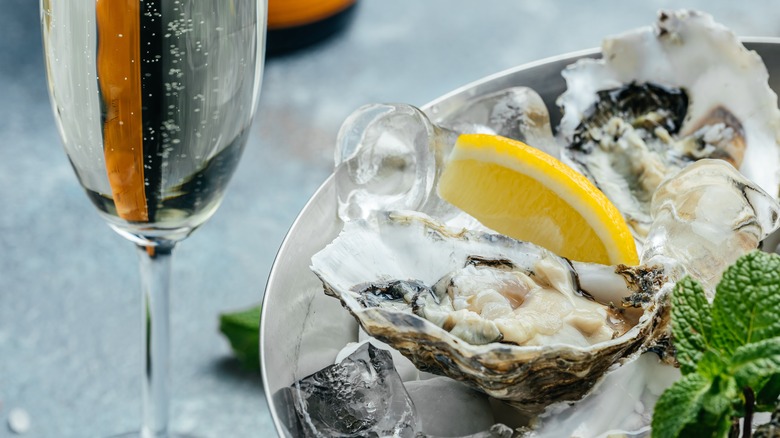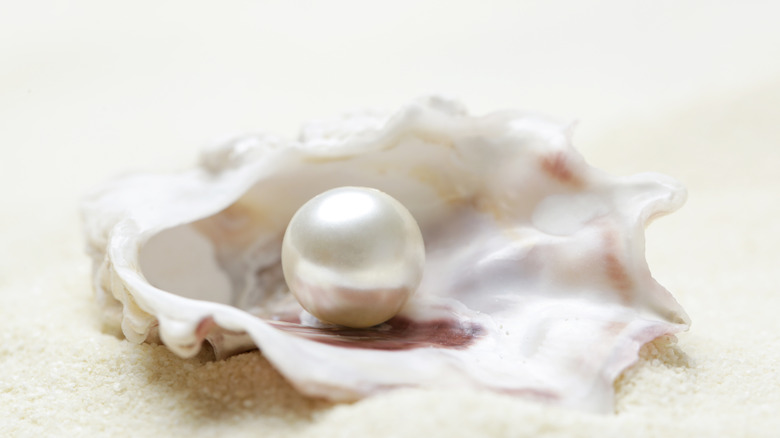Why You'll Never Find A Pearl In The Oysters You Eat
You're eating out at a fancy seafood restaurant. It's the kind that serves really gourmet seafood, and even some dishes that you can't even pronounce. You've been eating lobster tails, crab cakes, and shrimp cocktails in between glasses of champagne. As you delve into a few oysters, digging into their soft interior that's been filled with lemons and herb sauce, you bite down on something hard. You're no seafood expert, but biting into something hard like that isn't normal. You grab your napkin and spit into it, expecting to find a cracked tooth. Instead, you find a shimmering pearl, slightly bigger than a pea, in your hand. What are the chances of that?
Oysters are prized as being a luxury seafood dish, having risen from a life of being a cheap bar snack in coastal taverns to something you'd pay top dollar for. Such a shift in status is credited to overfishing and disease thinning the numbers of the once-common mollusk (via Business Insider), so it's much more a matter of paying to enjoy such a rare delicacy. But what most people are familiar with is what the oyster produces: pearls. These shiny little treasures can easily fetch around $50 to an astounding $100,000 dollars depending on factors such as location, color, and general quality of the pearl (via The Pearl Source).
But what are the chances that you'll stumble upon one of these undersea gems the next time you're shucking oysters?
You won't find any pearls in your oysters anytime soon
If you thought that you'd crack open an oyster during a Friday night out and find an unexpected windfall, you'd unfortunately be mistaken. While it is true that oysters can produce pearls, only select oysters have such an ability to make genuine pearls. According to ScienceDirect, pearl-producing oysters known as Pinctata belong to the family of Pteriida. Pteriida is unrelated to the family of Ostrea edulis, which are the usual type of oysters you'd find steamed and served in sauce. Think of it in the same way you'd think of a chameleon: Just because a chameleon can change color doesn't mean that every lizard can change color.
But that doesn't mean that people stumbling on pearls in their oyster dinner isn't unheard of. In 2018, a man was eating at New York's Grand Central Oyster Bar, when he pulled from his mouth a small pearl, estimated to be around $2,000 or $4,000 dollars (via Insider). Another New York oyster bar rewarded a diner with a $400 dollar pearl later that same year (via The New York Post).
But before you go getting any ideas, the chances of you finding a grand prize in your oyster shell are astronomically high, between 1 in 10,000, so while you can still enjoy your Oysters Rockefeller, don't expect to become a Rockefeller any time soon. Sampling some of the absolute best oysters in the U.S. still sounds appetizing even without finding a pearl.

